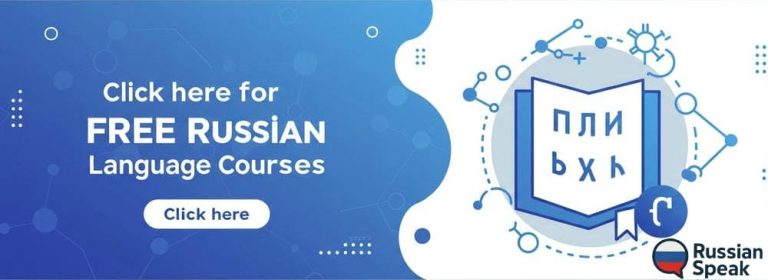Russian conjunctions serve a pivotal role in constructing complex sentences. They establish connections between clauses, thereby clarifying relationships between ideas. Coordinating conjunctions link independent clauses, while subordinating conjunctions introduce dependent clauses, shaping the overall meaning. Correlative conjunctions further refine sentence structure. Understanding these functions is essential for effective communication in Russian. However, common pitfalls exist in their usage, which can hinder clarity and coherence. Exploring these nuances reveals the intricacies of Russian syntax.
Table of Contents
ToggleUnderstanding Conjunctions in Russian Grammar

Although conjunctions may appear as simple connecting words, they play an essential role in the structure of complex sentences in Russian grammar. Their usage markedly enhances sentence complexity, allowing for the expression of intricate ideas and relationships.
Conjunctions serve to link clauses, enabling the formation of compound and subordinate structures that convey nuanced meanings. In Russian, various types of conjunctions exist, each contributing distinct functions, such as coordinating, subordinating, and correlative conjunctions.
The strategic application of these conjunctions provides speakers and writers the freedom to articulate thoughts with precision. Consequently, mastering conjunction usage is vital for achieving fluency and sophistication in Russian, as it directly influences the clarity and depth of communication.
Coordinating Conjunctions: Definition and Examples
Definition:
Coordinating conjunctions (сочинительные союзы) connect words, phrases, or independent clauses of equal grammatical importance, creating smooth and logical sentences without showing subordination.
![]()
Common Coordinating Conjunctions and Their Functions:
- и (i) — “and”
Adds similar or related elements.
Example: Он читает книгу и слушает музыку.
(He is reading a book and listening to music.) - или (ili) — “or”
Presents alternatives or choices.
Example: Ты хочешь чай или кофе?
(Do you want tea or coffee?) - но (no) — “but”
Shows contrast or opposition.
Example: Я хотел пойти в парк, но пошёл дождь.
(I wanted to go to the park, but it started raining.) - а (a) — “and/but/while”
Indicates a softer contrast or difference in viewpoint.
Example: Он любит футбол, а она предпочитает баскетбол.
(He likes football, while she prefers basketball.) - зато (zato) — “but/however”
Implies compensation or balance.
Example: Он не умеет петь, зато хорошо танцует.
(He can’t sing, but he dances well.)
![]()
Grammar Notes:
- Coordinating conjunctions are indeclinable (do not change form).
- They connect independent clauses or homogeneous parts of a sentence.
- Commas usually precede conjunctions like но, а, and sometimes или, but not и when connecting simple items.
![]()
Summary Table:
| Conjunction | Meaning | Function | Example |
|---|---|---|---|
| и | and | Addition | Я люблю чай и кофе. (I like tea and coffee.) |
| или | or | Choice | Пойдёшь или останешься? (Will you go or stay?) |
| но | but | Contrast | Он пришёл, но опоздал. (He came but was late.) |
| а | and/but/while | Contrast/Difference | Я работаю, а он отдыхает. (I work, while he rests.) |
| зато | but/however | Compensation | Он не умеет петь, зато танцует хорошо. (He can’t sing but dances well.) |
Importance:
Coordinating conjunctions allow for clear, flexible communication by linking ideas equally and enhancing sentence complexity while maintaining clarity and logical flow.
Subordinating Conjunctions: Definition and Examples
Subordinating conjunctions (подчинительные союзы) are a crucial element in Russian grammar, essential for creating complex sentences by linking dependent clauses (придаточные предложения) to main clauses (главные предложения). These conjunctions establish a specific type of relationship between two clauses, showing how the ideas in the dependent clause rely on or relate to the main clause.
What Are Subordinating Conjunctions?
A subordinating conjunction is a word that connects a dependent clause to an independent clause, indicating the nature of their relationship. The dependent clause cannot stand alone as a complete sentence because it depends on the main clause to provide its full meaning. The subordinating conjunction clarifies this connection by expressing relationships such as cause, condition, time, purpose, contrast, or result.
Common Subordinating Conjunctions in Russian
Russian uses various subordinating conjunctions, each serving a specific function. Some of the most frequent include:
- что (that) — introduces content or object clauses, often equivalent to English “that.”
- если (if) — sets conditions.
- когда (when) — indicates time.
- потому что (because) — expresses cause or reason.
- чтобы (in order to, so that) — expresses purpose.
- хотя (although) — introduces contrast.
- пока (while, as long as) — denotes simultaneous actions or time limits.
- как только (as soon as) — marks immediate sequence in time.
- так как (since, because) — explains cause.
Types of Relationships Expressed by Subordinating Conjunctions
- Condition:
Example: Если пойдёт дождь, я останусь дома.
(If it rains, I will stay at home.)
Here, если introduces a condition that affects the main action. - Time:
Example: Когда он пришёл, мы уже ушли.
(When he arrived, we had already left.)
The conjunction когда specifies when the event of the main clause took place. - Cause or Reason:
Example: Я не пошёл на работу, потому что заболел.
(I didn’t go to work because I was sick.)
Потому что explains why the action happened. - Purpose:
Example: Я учусь, чтобы получить хорошую работу.
(I study in order to get a good job.)
Чтобы expresses the aim or purpose of the action. - Contrast:
Example: Хотя было холодно, мы гуляли долго.
(Although it was cold, we walked for a long time.)
Хотя introduces a contrast between the two clauses. - Result or Consequence:
Example: Так как он опоздал, встреча началась без него.
(Since he was late, the meeting started without him.)
Так как indicates the reason leading to a result.
Importance in Russian Sentence Structure
Subordinating conjunctions are fundamental for expressing complex thoughts and relationships beyond simple statements. They allow speakers and writers to combine ideas logically and smoothly, creating sentences that communicate cause and effect, conditions, reasons, timing, purpose, and contrasts with precision.
Mastering their use is key to achieving fluency and sophistication when speaking or writing in Russian. It also helps in understanding Russian texts better because many sentences rely on these conjunctions to build meaning clearly and cohesively.
Summary
- Subordinating conjunctions connect dependent clauses to main clauses.
- They express specific logical relationships: time, cause, condition, purpose, contrast, etc.
- Common examples include что, если, когда, потому что, чтобы, and хотя.
- Understanding their function is essential for forming and interpreting complex sentences in Russian.
This knowledge opens up a wider range of expressive possibilities and improves comprehension of complex written and spoken Russian.
Correlative Conjunctions: Definition and Examples
Correlative conjunctions are pairs of words that work together to connect equal parts of a sentence, such as two subjects, two verbs, or two phrases. They show a relationship between the ideas they link and help to create clear, balanced sentences.
Common Correlative Conjunctions in English
| Correlative Conjunction | Example Sentence |
|---|---|
| both … and | She is both talented and hardworking. |
| either … or | You can either stay here or leave now. |
| neither … nor | He is neither a teacher nor a student. |
| not only … but also | She not only sings but also dances. |
Usage Tips
- The parts connected by correlative conjunctions should be parallel in structure (both nouns, both verbs, both adjectives, etc.).
- Maintain the same grammatical form after each part of the conjunction to avoid confusion.
- These conjunctions emphasize the connection between the paired ideas.
Correlative Conjunctions in Russian
Russian also uses correlative conjunctions, though they often appear somewhat differently than in English. Understanding these can help English speakers learning Russian to recognize similar patterns and improve sentence construction.
Common Russian Correlative Conjunctions with English Equivalents
| Russian (Cyrillic) | Phonetic Transcription | English Equivalent | Example in Russian | English Translation |
|---|---|---|---|---|
| как … так и | kak … tak i | both … and | Он как талантлив, так и трудолюбив. | He is both talented and hardworking. |
| либо … либо | libo … libo | either … or | Ты либо придёшь, либо останешься. | You will either come or stay. |
| ни … ни | ni … ni | neither … nor | Он ни студент, ни преподаватель. | He is neither a student nor a teacher. |
| не только … но и | ne tolko … no i | not only … but also | Она не только поёт, но и танцует. | She not only sings but also dances. |
Additional Notes for English Speakers Learning Russian
- Russian correlative conjunctions often appear with a verb or adjective in each part of the sentence.
- The word order in Russian can be more flexible than in English, but correlative pairs typically appear close together.
- Pay attention to negation: “ни … ни” is used with negation and means “neither … nor.”
- The phrase “не только … но и” emphasizes addition, similar to “not only … but also.”
Usage tips for correlative conjunctions emphasize consistent grammatical forms to guarantee clarity and coherence in written expression.
The Function of Coordinating Conjunctions in Sentence Structure
Coordinating conjunctions are essential in English for linking independent clauses and ideas smoothly. Understanding their function helps English speakers grasp how to build more complex and fluid sentences. When learning Russian, recognizing how similar or different conjunctions work provides a deeper insight into sentence construction and meaning.
Coordinating Conjunctions in English vs. Russian
In English, the most common coordinating conjunctions are for, and, nor, but, or, yet, so (often remembered by the acronym FANBOYS). These conjunctions connect clauses that are grammatically equal, preserving balance and clarity.
In Russian, coordinating conjunctions also link independent clauses but the language uses a smaller set of primary conjunctions with some subtle differences in usage and nuance:
- и (i) — and
- а (a) — but/while (often contrasting ideas)
- но (no) — but (stronger contrast than а)
- или (ili) — or
- да (da) — and/but (archaic or formal in meaning “and,” sometimes “but”)
- или… или… (ili… ili…) — either… or…
Unique Features of Russian Coordinating Conjunctions
- Position Flexibility
Russian conjunctions can often appear not only between clauses but also at the beginning of sentences or even phrases within a sentence, which changes emphasis but not grammatical correctness. In English, conjunctions usually appear strictly between clauses. - Contrast Nuance: А vs. Но
Both mean “but,” but а often introduces a mild contrast or shift in topic, while но signals a stronger opposition or contradiction. For example:- Я хотел пойти в парк, а он остался дома. (I wanted to go to the park, while he stayed home.) – mild contrast
- Я хотел пойти в парк, но пошёл дождь. (I wanted to go to the park, but it rained.) – stronger opposition
- No Direct Equivalent of “For” as a Coordinating Conjunction
English uses for to indicate reason or cause, functioning like a coordinating conjunction (“I stayed home, for it was raining”). Russian tends to use subordinating conjunctions (e.g., потому что) instead of coordinating ones for this purpose. - Comma Usage Differences
In English, coordinating conjunctions joining two independent clauses are usually preceded by a comma. In Russian, when using coordinating conjunctions like и, commas are typically not placed between two independent clauses unless there is a strong contrast or other punctuation rule applies.
Fluidity and Sentence Complexity in Russian
Russian allows for compound sentences using coordinating conjunctions but also frequently combines clauses through participial and verbal adverbial constructions (деепричастные обороты), which do not require conjunctions at all. This gives Russian speakers more options for fluid sentence building beyond simple coordination.
Examples Illustrating Coordinating Conjunctions in Russian
- Он читает книгу, и она пишет письмо.
(He is reading a book, and she is writing a letter.) - Я хотел уйти, а он остался.
(I wanted to leave, while he stayed.) - Мы пойдём в кино или останемся дома.
(We will go to the cinema or stay at home.) - Она устала, но продолжала работать.
(She was tired, but kept working.)
Related Russian Terms for English Speakers Learning Russian
- Союз (so-yuz) — Conjunction
- Сочинительный союз (so-chi-ni-tel’-nyy so-yuz) — Coordinating conjunction
- Простое предложение (pro-sto-ye pred-lo-zhe-niye) — Simple sentence
- Сложносочинённое предложение (slozh-no-so-chi-nyon-no-ye pred-lo-zhe-niye) — Compound sentence (joined by coordinating conjunctions)
- Придаточное предложение (pri-da-toch-no-ye pred-lo-zhe-niye) — Subordinate clause
- Запятая (za-pya-ta-ya) — Comma
In summary, understanding coordinating conjunctions in Russian enriches an English speaker’s ability to form clear, balanced, and fluid sentences in Russian. The nuanced differences in conjunction choice and punctuation between the two languages highlight important aspects of style and meaning that deepen comprehension beyond direct translation.
The Role of Subordinating Conjunctions in Complex Sentences

Although often overshadowed by their coordinating counterparts, subordinating conjunctions are crucial for constructing complex sentences that convey nuanced relationships between ideas. Their usage facilitates the integration of dependent clauses into independent clauses, thereby enhancing the overall meaning of a sentence.
This intricate interplay is essential for complex sentence formation, allowing writers to express cause, contrast, condition, and time effectively. Subordinating conjunctions such as “потому что” (because), “хотя” (although), and “если” (if) serve to establish these critical links, enabling a more sophisticated articulation of thoughts.
Enhancing Clarity With Correlative Conjunctions
When clarity is paramount in communication, correlative conjunctions emerge as valuable tools in the construction of complex sentences. These conjunctions facilitate sentence variety, enhancing the overall coherence of the message.
By utilizing correlative pairs, speakers and writers can create a balanced structure that emphasizes relationships between ideas.
- They not only connect similar ideas but also contrast them.
- They promote clarity in multifaceted arguments.
- They enable the articulation of complex thoughts with precision.
- They enhance readability by establishing predictable patterns.
Incorporating correlative conjunctions effectively allows for a nuanced expression of interconnected propositions, ultimately enriching the communicative experience.
Their strategic use is essential for achieving clarity in complex linguistic constructions.
Common Mistakes in Using Russian Conjunctions
Many learners of the Russian language frequently encounter pitfalls in the use of conjunctions, which can lead to ambiguity and miscommunication. Common errors often stem from conjunction misuse, particularly when learners confuse similar conjunctions or fail to recognize their appropriate contexts.
| Error Type | Example | Correct Usage |
|---|---|---|
| Confusion | “и” instead of “или” | “Я хочу чай или кофе.” |
| Omission | Missing conjunction | “Я не знаю, он пришёл.” |
| Misplacement | Incorrect sentence structure | “Когда он пришёл, я спал.” |
| Redundant usage | “и и” | “Он и она пришли.” |
Understanding these common pitfalls is essential for effective communication in Russian, allowing learners to express their thoughts clearly and accurately.
Practical Exercises for Mastering Russian Conjunctions
To effectively master Russian conjunctions, learners must engage in targeted exercises that reinforce their understanding of conjunction usage in complex sentences.
These practical applications can enhance fluency and comprehension through focused conjunction exercises.
Key activities include:
- Sentence Expansion: Combine simple sentences using various conjunctions to create complex structures.
- Error Correction: Identify and correct conjunction misuse in provided sentences.
- Contextual Usage: Compose sentences that demonstrate the appropriate use of different conjunctions in varying contexts.
- Conjunction Mapping: Visualize relationships between ideas using mind maps that incorporate conjunctions effectively.
Frequently Asked Questions
How Do Conjunctions Affect Sentence Tone in Russian?
Conjunctions greatly influence sentence tone in Russian, shaping sentence nuance and emotional impact. Their selection determines the relationship between ideas, guiding the reader’s interpretation and emotional response, ultimately enhancing the depth and richness of the communication.
Can Conjunctions Change Meaning in Different Contexts?
Conjunctions exhibit contextual implications that greatly alter meaning. Their flexibility allows for nuanced interpretations, influencing the overall message conveyed. Understanding this dynamic is essential for effective communication and comprehension, particularly in complex linguistic structures.
What Are Some Idiomatic Expressions Using Conjunctions?
The exploration of idiomatic phrases reveals various conjunction examples, such as “either…or,” indicating choice, and “neither…nor,” negating options. These expressions enhance communication by providing nuanced meanings within different contexts, enriching linguistic diversity and expression.
Are There Regional Variations in Conjunction Usage?
The inquiry into regional differences reveals notable conjunction preferences across various dialects. Linguistic studies indicate that certain regions exhibit unique conjunction usage patterns, reflecting cultural nuances and communication styles inherent to those communities.
How Do Conjunctions Interact With Russian Verb Aspects?
Conjunction types in Russian greatly influence verb aspects, creating aspectual nuances that affect meaning. These interactions shape sentence structure, conveying temporal and causal relationships, thereby enhancing clarity and depth in communication within the language.



